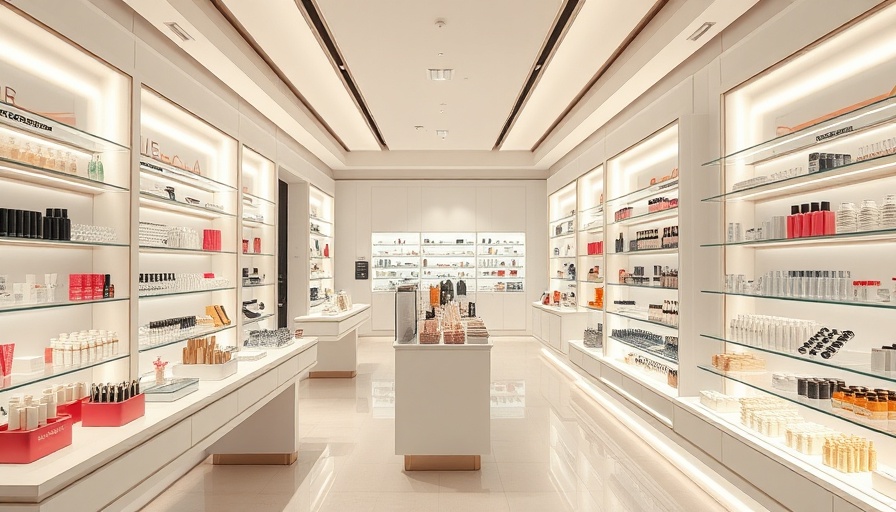
Understanding Luxury Beauty's Current Landscape
The luxury beauty sector is experiencing a significant shift as spending slows. According to recent credit card transaction data from Citi, luxury goods spending has decreased by 9.3% in February and 5.9% in January. This trend raises concerns, especially for retailers like Cos Bar, which rely heavily on high-income consumers—those earning above $100,000—who historically represent about half of the customer base. The slowing luxury spending could signal challenges for brands that have thrived on the robust spending habits of affluent customers.
Cos Bar’s Resilient Approach to Luxury Beauty
Despite a challenging landscape, Cos Bar remains optimistic. CEO Oliver Garfield emphasizes a conservative budgeting approach yet stresses the importance of continued brand engagement and expansion. “Luxury shoppers are pulling back a little bit, but they’re not giving up,” he asserts. This philosophy reflects a resilient mindset that prioritizes customers' long-term loyalty over short-term sales. The introduction of their 21st store in Studio City, CA, showcases this enduring commitment to growth, even amidst economic uncertainty.
Adapting Strategies for Consumer Demands
Cos Bar is shifting its strategy to keep pace with evolving consumer needs. With plans to accelerate brand launches, the retailer aims to reinvigorate its product offerings. Currently housing around 75 brands, including prestigious names like La Mer, Sisley Paris, and Tom Ford, the focus will be on capturing the attention of beauty enthusiasts looking for the latest in luxury skincare and fragrance. This highlights the importance of maintaining a strong portfolio to address the demand for premium beauty products.
The Role of Travel in Consumer Behavior
A unique factor affecting luxury beauty spending is the affluent clientele's travel habits. The ability to travel to exotic locations such as Aspen, Vail, and globally can impact luxury retail performance significantly. When wealthy customers travel, they often spend less on local retail experiences. As Garfield notes, “If there is a surge in European, Caribbean, or Asian travel, that impacts our business.” Keeping this in mind, brands must adapt their marketing strategies to account for these shifting purchasing patterns.
Navigating the Longer-Term Vision
What does the future hold for luxury beauty brands like Cos Bar? The fusion of adaptive strategies and deep understanding of market conditions will play a critical role. Growth may slow temporarily, but Garfield believes it will bounce back as the luxury sector stabilizes.
Empowering Conscious Consumers
For conscious consumers, understanding these dynamics is vital. As shoppers, women aged 35 and older are increasingly discerning, they seek brands that resonate with their values—sustainability, transparency, and genuine engagement. This demographic plays a crucial role in shaping the industry and pushing brands to embrace their ethical responsibilities.
Conclusion: Taking Charge of Your Beauty Choices
As luxury beauty faces fluctuations in spending, empowered consumers should approach their beauty selections with intention and mindfulness. Cos Bar’s commitment to adapt to these changes demonstrates the importance of resilience in the beauty community. By keeping an eye on emerging trends and aligning purchases with personal values, consumers can navigate these shifts confidently.
 Add Row
Add Row  Add
Add 




 Add Row
Add Row  Add
Add 

Write A Comment